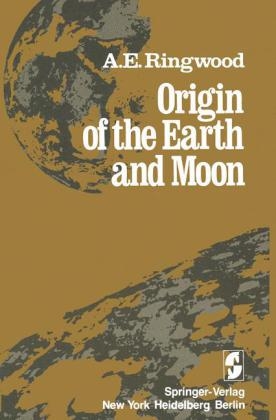
Origin of the Earth and Moon
Springer-Verlag New York Inc.
978-0-387-90369-9 (ISBN)
- Titel ist leider vergriffen;
keine Neuauflage - Artikel merken
This was the principal theme of his 1952 book, "The Planets," which revolutionized our approach to this subject. In many subsequent papers, Urey strongly emphasized the importance of meteorites in providing critical evidence of chemical conditions in the primordial solar nebula, and of the chemical fractionation processes which occurred during formation of the terrestrial planets. This approach has been followed by most subsequent geochemists and cosmochemists.
I Composition and Constitution of the Earth.- 1 The Mantle-Crust System.- 1.1 Principal Subdivisions of the Earth's Interior.- 1.2 The Crust.- 1.3 The Upper Mantle.- 1.4 The Transition Zone.- 1.5 The Lower Mantle.- 2 Geochemistry of the Mantle.- 2.1 Chemical Homogeneity versus Heterogeneity.- 2.2 Abundance Patterns of Compatible Elements and Their Significance.- 2.3 Major Elements and Involatile Lithophile Elements in Pyrolite as Compared to Their Primordial Abundances.- 2.4 Abunance Patterns of Volatile and Siderophile Elements.- 3 Composition and Formation of the Core.- 3.1 The Role of Metallic Iron.- 3.2 Light Elements in the Outer Core.- 3.3 Iron Oxide as a Major Component of the Outer Core.- 3.4 Formation of the Core.- 4 Boundary Conditions for the Origin of the Earth.- II Origin of the Earth.- 5 Protostars, Disks, and Planets.- 5.1 Cosmogonic Background.- 5.2 Development of Protostars.- 5.3 The Formation of Disks.- 5.4 The Outer Planets and Their Regular Satellite Systems.- 5.5 Angular Momentum Relationships within the Solar System.- 5.6 Possible Relevance for Lunar Origin.- 6 Aspects of Planet Formation in the Primordial Solar Nebula.- 6.1 Mass of the Nebula.- 6.2 Accretion of the Planets.- 6.3 Temperature Regime and the Compositions of Planetesimals.- 6.4 Gas-Solid Equilibria in the Nebula.- 6.5 Chemical Fractionations among the Terrestrial Planets.- 7 Early Theories of Accretion of the Earth.- 7.1 Homogeneous Accretion.- 7.2 Single-Stage Hypothesis.- 7.3 The Heterogeneous Accretion Hypothesis.- 8 Homogeneous Accretion Revisited.- 8.1 Some General Considerations.- 8.2 Accretion of the Earth.- 8.3 Formation of the Core.- 8.4 Siderophile Elements and Oxidation State within the Mantle.- 8.5 Atmosphere and Hydrosphere.- 8.6 Conclusion.- III The Moon and Planets.- 9 The Terrestrial Planets.- 9.1 Introduction.- 9.2 Mars.- 9.3 Venus.- 9.4 Mercury.- 9.5 Asteroids and Meteorites.- 9.6 Cosmogonic Models Based on Chondrites.- 10 Constitution and Composition of the Moon.- 10.1 Internal Structure.- 10.2 The Lunar Crust-Upper Mantle System.- 10.3 Mare Basalts and the Lower Mantle.- 10.4 Further Limits on the Composition of the Lunar Interior.- 10.5 Lunar Thermal Regime.- 11 Geochemistry of the Moon.- 11.1 Introduction.- 11.2 Siderophile Elements in Lunar-Mare and Terrestrial Basalts.- 11.3 Tungsten and Phosphorus.- 11.4 Eucritic Parent Body.- 11.5 Indigenous Siderophile Component of the Lunar Highlands.- 11.6 Geochemical Constraints on the Existence of a Lunar Core.- 11.7 Volatile Elements in Mare Basalts and Their Source Regions.- 11.8 Volatile Elements in the Lunar Highlands.- 12 Towards a Theory of Lunar Origin.- 12.1 Introduction.- 12.2 The Pre-Apollo Scene.- 12.3 New Variations on Old Themes.- 12.4 The Post-Apollo Scene : Geochemical Testimony.- 12.5 Conclusion.- References.
| Zusatzinfo | biography |
|---|---|
| Verlagsort | New York, NY |
| Sprache | englisch |
| Gewicht | 700 g |
| Themenwelt | Naturwissenschaften ► Physik / Astronomie ► Allgemeines / Lexika |
| Naturwissenschaften ► Physik / Astronomie ► Astronomie / Astrophysik | |
| ISBN-10 | 0-387-90369-0 / 0387903690 |
| ISBN-13 | 978-0-387-90369-9 / 9780387903699 |
| Zustand | Neuware |
| Haben Sie eine Frage zum Produkt? |
aus dem Bereich


